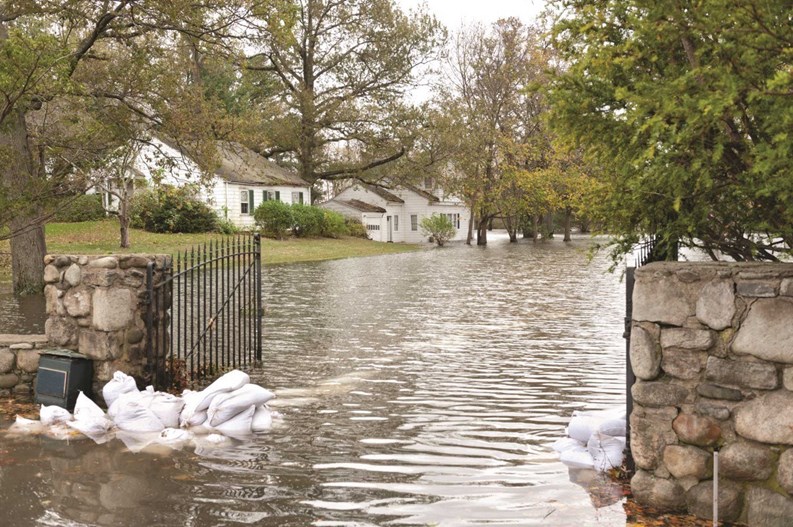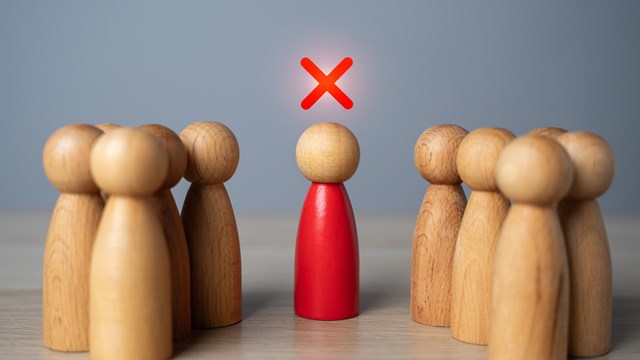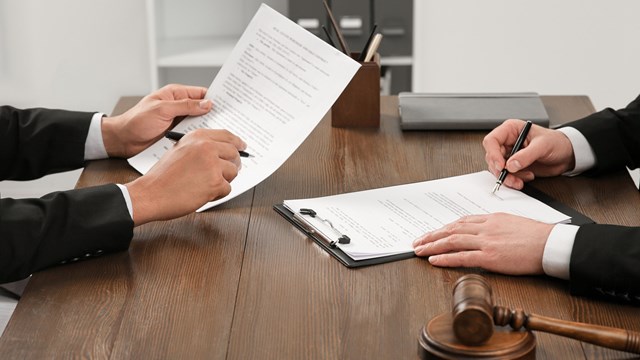We’ve all seen the news photos of Hurricane Sandy’s wrath wrought along the Jersey Shore, Lower Manhattan, Queens and Staten Island. While New England did not suffer the brunt of the storm, some areas of Connecticut, Rhode Island and southeastern Massachusetts suffered significant damage as Superstorm Sandy plowed its way up the coast. Although there were no major disaster areas in New England comparable to the devastated neighborhoods south of the region, property owners including condominium communities will nevertheless feel an impact for many years to come.
Unlike Hurricane Irene, Sandy hit the coastal areas harder than inland. “In Connecticut, the hardest area hit was the I-95 corridor from Greenwich to Groton,” according to Richard Bouvier of Bouvier Insurance Company located in Hartford, Connecticut. The most common claim that Bouvier’s agency experienced was water damage from rain followed by wind damage and flooding.
“A lot had to do with location,” says attorney Christopher Leonard of Collins, Hannafin, Garamella, Jaber & Tuozzolo, P.C., a law firm which represents over 150 condo communities throughout Connecticut. Communities along the shoreline got it the worst.” Leonard says that there was some inland water damage from poor drainage and some isolated damage from fallen trees, while the coast got greater wind damage and flooding. “There was flooding on the coast,” he says.
“Flooding was not like New York, New Jersey or Long Island. Long Island acted as a barrier. FEMA was involved along the coast because of flooding. How owners will be covered will be determined by the number of claims and money available. That may not be determined for a year. Sustained winds from this storm were 85 mph in this area. Had the winds been higher, it could have been catastrophic,” Leonard says.
“Nationally, Sandy was the most lethal storm in 40 years,” says Bouvier.” Over 70 deaths were associated with it. It was the second costliest storm next to Katrina.” Bouvier points out that ice damming from the snowstorm in 2011 ranks higher in numbers of Connecticut claims he has witnessed, followed by the surprise Halloween storm of that year, which saw a lot of property damage from snow-laden falling trees. Sandy ranks third, followed by Hurricane Irene.
Wind and Water
Andrea Scalzo, who owns Scalzo Property Management in Bethel, Connecticut, confirms this assessment of Sandy as a major storm for New England, but not as severe as the 2011 snowstorms. Scalzo Property Management manages up to 60 associations with approximately 3,000 units in Fairfield County. “Most condo communities sustained damage to shingles but not entire roofs. Most of the damage was wind damage. Nobody was displaced from their units due to wind damage,” reports Scalzo, “though some folks had to find alternative housing due to power shortages. In most cases, power was returned in two to three days; in a few instances, up to seven days. The 2011 snowstorms were much worse. There was damage from leaking roofs from ice damming. Of 3,000 units, maybe 500 units had roof damage in 2011.”
Scalzo relates there were two major aftermaths from Sandy. Individually, unit owners are asking for permission to install generators as a backup in case of power outages. Boards have to weigh safety concerns against whether the generators will be too noisy and affect other unit owners’ quiet enjoyment. The other consequence is an expected steep increase in building insurance.
Sandy’s greatest damage to condo associations may, in fact, be the increased cost of property insurance. Jo Titsworth is a property manager for Pyramid Real Estate Group in Stamford, Connecticut. She cited three properties in Stamford, at which she manages the accounts, as examples of the impact of Sandy on insurance. “The only property that sustained damage from the hurricane had some roof and siding damage. The claim carries a $1,000 deductible, which will be borne by twelve units,” says Titsworth. An example of how economy of scale can affect smaller associations with insurance claims is a six-unit association that has to pay $12,000 per year or $2,000 per unit for insurance—$1,000 is for building insurance and the other $1,000 is for flood insurance, since the property is near a river and is deemed a flood zone. Another association will experience an increase in its deductible insurance for wind damage from 1% of the value of the building to 2%, or from $17,000 per year to $34,000. Neither of the latter two properties was damaged by Sandy.”
Deductibles are Rising
“Deductibles are a big issue for condo associations,” says Leonard. “Some associations have deductibles as high as $2,500 per unit.” Leonard points out that the string of damaging storms—to the 2011 snow storms, the Halloween surprise storm and the two hurricanes—followed a lull in weather events in recent years. Insurance costs for condos have now gone up due to the recent spate of storms. They will continue to rise significantly, he predicts, along with flood insurance for properties in flood zones. While 90% of Connecticut associations are not in flood zones, according to Leonard, those that are will carry flood insurance if they can afford it. “It’s less likely for condos to get bank lending if a unit is in a flood zone and doesn’t have flood insurance,” says Leonard. Nevertheless, not all associations carry flood insurance, according to Bouvier, and there are limits even where coverage is available.
Getting coverage for flood insurance can be a problem in coastal areas of southern New England, according to attorney Frank Lombardi of Goodman, Shapiro & Lombardi, which represents condo associations in Massachusetts and Rhode Island. Lombardi notes there was flooding along the coast in Narragansett Bay. Some associations are not covered with flood insurance because they could not obtain coverage. “Developers from 30 years ago came in and tore down old ‘honky tonk’ businesses and replaced them with residential developments,” says Lombardi. “They built below the flood plain. Now these developments that are condo associations are unable to get flood plain insurance.” Lombardi points out that in addition to flood insurance, these Narragansett condo communities have to deal with code enforcement and the overall number of storm related claims, which will increase premiums and deductibles.
“We haven’t seen the financial impact of Sandy as yet on the property insurance market but it’s not going to be good,” says Bernie Gitlin of Risk Strategies Company in Randolph, Massachusetts. “Hurricanes Sandy and Irene did something different than previous hurricanes,” says Gitlin. “Most hurricanes coming up the coast follow the Gulf Stream but they don’t shift left like Irene and Sandy. Irene shifted left but its impact was more inland and impacted mainly New Hampshire and Vermont. Sandy impacted closer to the coast.”
Gitlin points out that insurers create models based on weather patterns when assessing risk. There is a model for every area up the East Coast. “It’s more art than science,” says Gitlin. “So now we have a model for the risk of somewhat inland. And we will have another for Sandy.”
There has never been a hurricane that directly hit Boston, even though the area has experienced other severe hurricanes. Gitlin points out the famous Hurricane of 1938 directly hit Rhode Island. Hurricane Carol, which affected Boston in 1950, directly hit New Bedford, he recalls. What matters to insurance companies, however, is possible risk, and Sandy creates a possible risk in the Boston market. “So, if Sandy took a left and hit New York, a future hurricane could take a left and hit Boston,” says Gitlin.
In addition to weather patterns, there are other factors in the insurance industry that will impact
insurance for condo associations. “Insurance companies take a certain amount of risk and sell the remainder to reinsurance companies,” says Gitlin. While reinsurance can spread the risk, it can also be affected if there are a number of worldwide losses as have been experienced in the last few years.
Insurance companies are profit-making businesses. Gitlin points out that a portion of their profit is made in reinvesting in the financial markets, not in speculative stocks but in bonds. “A few years ago, a company could earn money on interest of 3% to 4%. Now the return is in the area of 1%.” Lower profit margins on investments affect the price charged on premiums.
In addition to global factors, insurance premiums are affected by the way property is assessed. “New England condos are mostly framed buildings, which have greater risk,” says Gitlin. “The rules for federal flood insurance changed in the 1990s. For flood insurance, a residential condo must insure up to 80% of replacement value but with a cap of no more than $250,000 per unit. This includes all units, including the top floors, which would be less likely to be impacted. Underwriting is getting tougher. Insurance companies are not only looking at past claims but also building conditions, including deferred maintenance issues, which associations may have allowed due to costs."
“Property rates began to regroup and stabilize after the effects of 9/11 eased,” says Gitlin. “In 2011, property insurance rates started to jump after the snowstorms. We expect property insurance rates of some magnitude, regardless of where you live. Closer to the coast will be even greater. And even greater increases if your association has filed a claim.”
As the waters in the tropics begin to form new hurricanes for the upcoming late summer and autumn, we can only wonder what new weather events are on the horizon.
Leonard Golder is a freelance writer and a frequent contributor to New England Condominium.







Leave a Comment